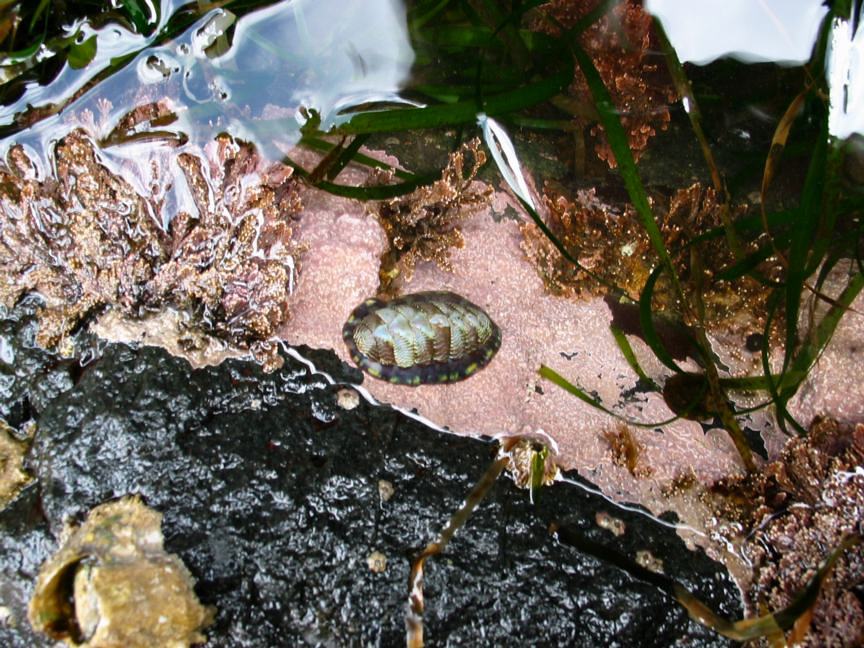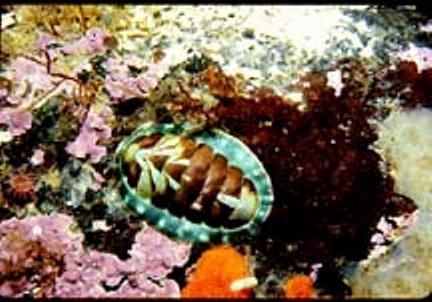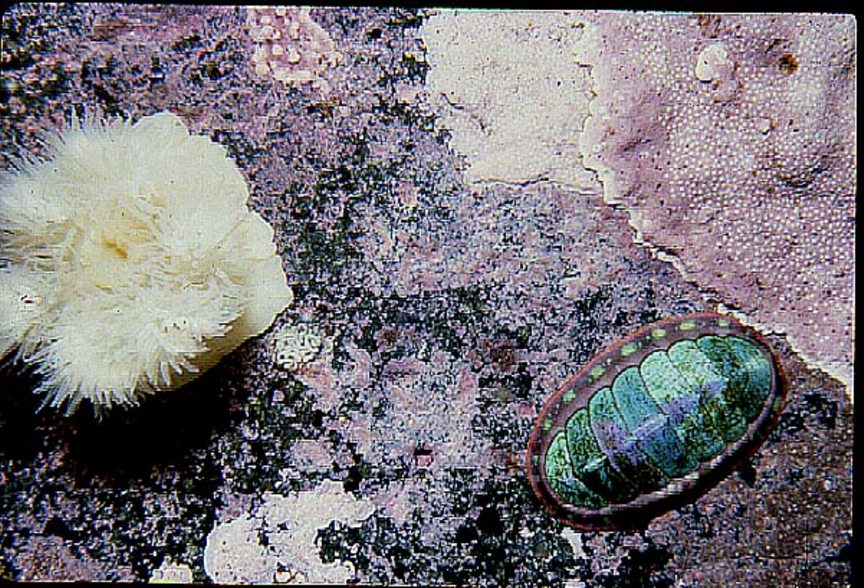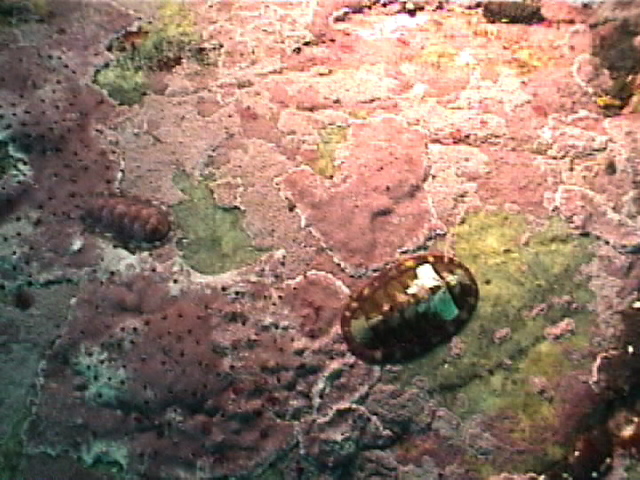Jean-Olivier Dalphond and Garry Fletcher listen to the diver Ryan Murphy, (PC Year 26) as he tests out the DIVELINK system from underwater at Race Rocks. We were able to add this underwater sound ( which is carried by sonar – up to 50 meters underwater) to live webcasts by the end of the term in April 2001.
Monthly Archives: March 2001
Webcast to Conference in New York from underwater Race Rocks
During a presentation to the ETC conference at the United Nations School in New York in the spring of 2001, we tried out the underwater audio link from DIVELINK . An audio signal is relayed by SONAR for Ryan to a receiver near the docks. This receiver was connected to the audio input on the G3 laptop computer and to the shore tender as well. Both voices could be carried by the Sorenson Broadcaster first by wireless AirPort and then onto the internet. In this way we were able to communicate from underwater in the Pacific Ocean live by internet to the Altlantic coast. In this video, Ryan Murphy, a student at Pearson College, operates the device and the camera was operated by Jean-Olivier Dalphond, also a student at the college.
Tonicella lineata: the lined chiton
Characteristics: Tonos (stretched/braced) Cell, lineatus (lined/marked with lines).
The lined chiton eats the surface layers of this encrusting algae, including the film of diatoms and other small organisms on it.
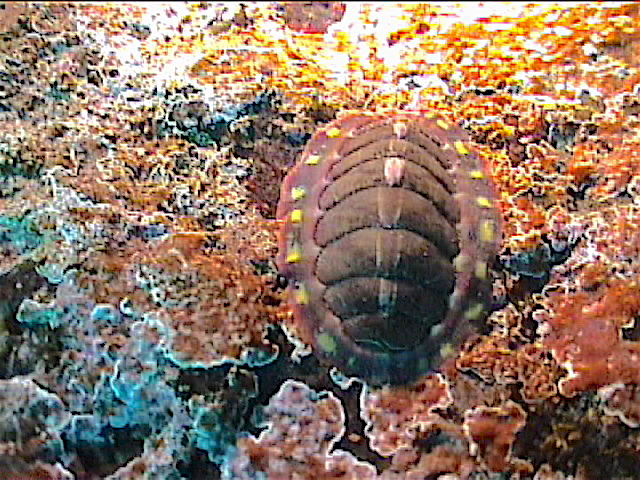
All Chitons have a muscular foot for locomotion, a complete digestive tract from the mouth to the anus, a calcium carbonate shell with 8 overlapping plates. This is produced by the mantle, where organs are suspended in coelom. A gill extracts oxygen and disposes waste, a chiton exposed to air consumes only 73 percent of the amount it does when submerged. It remains in oxygen debt until re submersion. Even though the body has bilateral symmetry, the gill numbers on both sides may very well be irregular, asymmetrical.
Physical Description: The lined chiton, Tonicella lineata is covered by 8 smooth plates,. Endless colour variations exist. The girdle around the plates is smooth and leathery, often with a row of lighter spots or bands. Size up to 5 cm long.
It is brightly colored, having a zigzagging dark black/ brown lines over a background of yellow, orange, pink, orchid, and lavender predominate. This aids in its camouflage around Lithothamnion, the coralline algae, where it is usually found.
Geographical Range: Aleutian Islands to San Miguel Island, CA, Sea of Okhotsk, Northern Japan
Habitat: They live on rocks covered with coralline algae that are in the low intertidal or subtidal zone. They can also be found in urchin burrows in the rock.
Feeding: They eat encrusting coralline algae.
Predators:Predators of this invertebrate are sea stars, Pisaster ochraceus and Leptasterias hexactis. Harlequin ducks, and the river otters..
Reproduction: Dioecious broadcast spawners. Spawning occurs in the spring. The males release their sperm into the water while exhaling waste water. Females release a stream of green eggs. Larvae metamorphose into juveniles approximately 12 hours after having settled on coralline algae.
Adaptations: Larval development stops unless the larva settles on coralline algae, which is its food source. This alga also acts as camouflage, as the chiton is often of the same colour.
Kingdom: Animalia
Phylum: Mollusca
Class: Polyplacophora
Order: Neoloricata
Suborder: Ischnochitonina
Family: Ischnochitonidae
Genus: Tonicella
Species: lineata
Common Name: lined chiton
Interesting Possible Further Studies:
The behavior in different depths.
The reproduction cycle of the lined chitons.
- References:
http://www.wallawalla.edu/academics/departments/biology/rosario/inverts/Mollusca/Polyplacophora/Tonicella_lineata.htmlEcology and reproductive biology of Tonicella lineata (Wood, 1815)(Mollusca-Polyplacophora), by JR Barnes, 1972The larval settling response of the lined chiton Tonicella lineata, by J. R. Barnes and J. J. Gonor, MARINE BIOLOGY, Volume 20, Number 3, page 259-264, 1973http://wikis.evergreen.edu/marinelife1011/index.php/Tonicella_lineataAndy Lamb and Bernard P. Hanby, Marine Life of the Pacific Northwest, Harbour Publishing p. 176Adam Sedgwick , Magazine: Proceedings of the Royal Society of London, Vol. 33, (1881 – 1882), pp. 121-127
Morris, R.H. et al. Intertidal Invertebrates of California. (Stanford: Stanford University Press, 1980)
Other Members of the Phylum Mollusca at Race Rocks.
and Image File |
 The Race Rocks taxonomy is a collaborative venture originally started with the Biology and Environmental Systems students of Lester Pearson College UWC. It now also has contributions added by Faculty, Staff, Volunteers and Observers on the remote control webcams. The Race Rocks taxonomy is a collaborative venture originally started with the Biology and Environmental Systems students of Lester Pearson College UWC. It now also has contributions added by Faculty, Staff, Volunteers and Observers on the remote control webcams.
Bassam Jarbawi (PC yr. 27) |
Fouling or Succession
Already by March, the growth of algae on the environmental sensors and the aluminum bar has been prolific. Regular dives have to be made to keep the sensors free of algae. The predominant Genus here is Laminaria.
Fouling on Sensor bar
Already by March, the growth of algae on the environmental sensors and the aluminum bar has been prolific. Regular dives have to be made to keep the sensors free of algae. The predominant Genus here is Laminaria.
